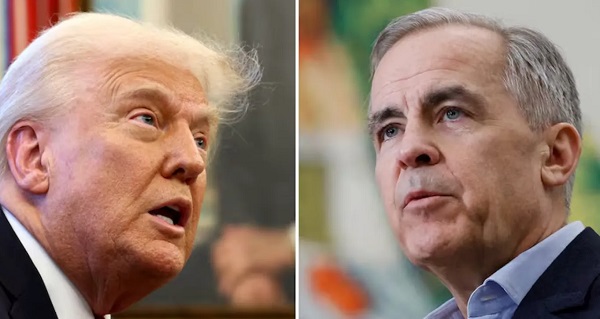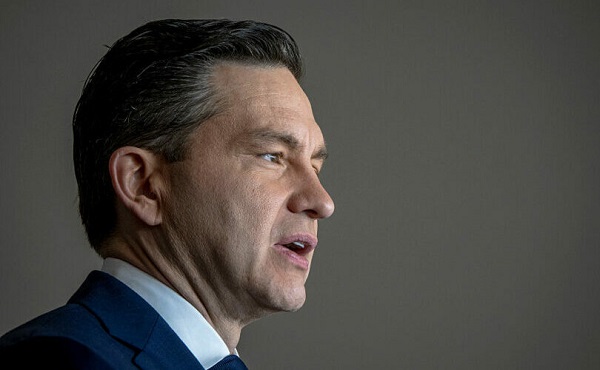Alberta
Official Installation Ceremony for RDC President Dr. Peter Nunoda

From Red Deer College Communications
Red Deer College celebrates new President during Installation Ceremony
Festivities included new traditions and a look towards institution’s future as a university
It was a special day for Dr. Peter Nunoda, Red Deer College’s new President. While he began his tenure in September, Dr. Nunoda was officially installed as RDC’s 11th President during a ceremony Tuesday, November 12.
“I am humbled to receive the warm welcome from the College community and our external partners that I have enjoyed today, as well as during other occasions in the brief time I’ve lived in central Alberta,” says Dr. Nunoda.
Red Deer College was a buzz with special moments during the Installation Ceremony as the College community, government representatives, dignitaries and community members from across central Alberta welcomed formally Dr. Nunoda.
Indigenous drumming and singing provided entertainment for the audience, as well as signifying RDC’s continued commitment to collaborating with Indigenous communities in the spirit of reconciliation. In recognition of Dr. Nunoda’s proud Japanese Canadian heritage, members of the Students’ Association honoured him with a loaned piece from the College’s permanent art collection. The students presented a colour woodblock on silk by famed Japanese artist Kunisada that dates from 1848-58. This art will be displayed by Dr. Nunoda in his office during his term.
A new tradition for Red Deer College was introduced as Dr. Nunoda took an Oath of Office led by Her Honour, the Honourable Lois E. Mitchell, CM, AOE, LLD, Lieutenant Governor of Alberta. Dr. Nunoda also received a new Presidential stole that he will wear as part of his academic regalia at future Convocation Ceremonies and other important events.
“On behalf of my colleagues on the Board of Governors, I was honoured to host today’s Installation Ceremony as we welcome Dr. Nunoda into our College community at this momentous point in our institution’s history,” says Guy Pelletier, Chair of RDC’s Board of Governors. “Dr. Nunoda has already identified a strong path for where he will lead this institution into the future as a university, and we are very excited to collaborate with him and our community to realize this bold transformation that has been decades in the making.”
Dr. Nunoda provided the audience with a glimpse of his leadership and the future he envisions for Red Deer University during today’s ceremony. This vision includes continuing to serve learners as a polytechnic university offering more diverse programs. As a university, this includes degrees, apprenticeships and the full breadth of other credentials that RDC currently offers. Additionally, existing and future facilities on RDC’s vibrant campuses will provide opportunities for community collaboration and a culture of engagement. Recognizing Alberta’s current economic conditions, Dr. Nunoda identified the need for a strong business model that contributes to the institution’s economic and environmental sustainability.
While honouring RDC’s past successes and strong reputation, Dr. Nunoda also noted it will be important to highlight the value of practical education and signature learning experiences that students will receive from Red Deer University, so that employers realize the benefit of the skills and knowledge that work-ready graduates will provide to the local and global economy.
“We have an exciting future ahead as Red Deer University, continuing to grow practical learning opportunities for our students, and creating stronger connections with individuals and organizations in our region,” says Dr. Nunoda. “Through innovative solutions, creative problem solving and an energetic touch of imagination, we will reach our goals and position Red Deer University as the first choice for post-secondary education.”
Dr. Nunoda identified a strong desire to work with government partners to allow the institution to begin calling itself Red Deer University starting in September 2020, citing the institution’s readiness and work that is currently underway. This work includes program development for three new degrees: Bachelor of Education, Bachelor of Science and Bachelor of Business Administration, with students anticipated to begin classes as early as September 2021, pending government approval.
Learn more about RDC’s 11th President, Dr. Peter Nunoda, by visiting rdc.ab.ca/president
Alberta
Red Deer Justice Centre Grand Opening: Building access to justice for Albertans

The new Red Deer Justice Centre will help Albertans resolve their legal matters faster.
Albertans deserve to have access to a fair, accessible and transparent justice system. Modernizing Alberta’s courthouse infrastructure will help make sure Alberta’s justice system runs efficiently and meets the needs of the province’s growing population.
Alberta’s government has invested $191 million to build the new Red Deer Justice Centre, increasing the number of courtrooms from eight to 12, allowing more cases to be heard at one time.
“Modern, accessible courthouses and streamlined services not only strengthen our justice
system – they build safer, stronger communities across the province. Investing in the new Red Deer Justice Centre is vital to helping our justice system operate more efficiently, and will give people in Red Deer and across central Alberta better access to justice.”

Government of Alberta and Judiciary representatives with special guests at the Red Deer Justice Centre plaque unveiling event April 22, 2025.
On March 3, all court services in Red Deer began operating out of the new justice centre. The new justice centre has 12 courtrooms fully built and equipped with video-conference equipment to allow witnesses to attend remotely if they cannot travel, and vulnerable witnesses to testify from outside the courtroom.
The new justice centre also has spaces for people taking alternative approaches to the traditional courtroom trial process, with the three new suites for judicial dispute resolution services, a specific suite for other dispute resolution services, such as family mediation and civil mediation, and a new Indigenous courtroom with dedicated venting for smudging purposes.
“We are very excited about this new courthouse for central Alberta. Investing in the places where people seek justice shows respect for the rights of all Albertans. The Red Deer Justice Centre fills a significant infrastructure need for this rapidly growing part of the province. It is also an important symbol of the rule of law, meaning that none of us are above the law, and there is an independent judiciary to decide disputes. This is essential for a healthy functioning democracy.”
“Public safety and access to justice go hand in hand. With this investment in the new Red Deer Justice Centre, Alberta’s government is ensuring that communities are safer, legal matters are resolved more efficiently and all Albertans get the support they need.”
“This state-of-the-art facility will serve the people of Red Deer and surrounding communities for generations. Our team at Infrastructure is incredibly proud of the work done to plan, design and build this project. I want to thank everyone, at all levels, who helped make this project a reality.”
Budget 2025 is meeting the challenge faced by Alberta with continued investments in education and health, lower taxes for families and a focus on the economy.

Quick facts
- The new Red Deer Justice Centre is 312,000 sq ft (29,000 m2). (The old courthouse is 98,780 sq ft (9,177 m2)).
- The approved project funding for the Red Deer Justice Centre is about $191 million.
Alberta
Made in Alberta! Province makes it easier to support local products with Buy Local program

Show your Alberta side. Buy Local. |
When the going gets tough, Albertans stick together. That’s why Alberta’s government is launching a new campaign to benefit hard-working Albertans.
Global uncertainty is threatening the livelihoods of hard-working Alberta farmers, ranchers, processors and their families. The ‘Buy Local’ campaign, recently launched by Alberta’s government, encourages consumers to eat, drink and buy local to show our unified support for the province’s agriculture and food industry.
The government’s ‘Buy Local’ campaign encourages consumers to buy products from Alberta’s hard-working farmers, ranchers and food processors that produce safe, nutritious food for Albertans, Canadians and the world.
“It’s time to let these hard-working Albertans know we have their back. Now, more than ever, we need to shop local and buy made-in-Alberta products. The next time you are grocery shopping or go out for dinner or a drink with your friends or family, support local to demonstrate your Alberta pride. We are pleased tariffs don’t impact the ag industry right now and will keep advocating for our ag industry.”
Alberta’s government supports consumer choice. We are providing tools to help folks easily identify Alberta- and Canadian-made foods and products. Choosing local products keeps Albertans’ hard-earned dollars in our province. Whether it is farm-fresh vegetables, potatoes, honey, craft beer, frozen food or our world-renowned beef, Alberta has an abundance of fresh foods produced right on our doorstep.
Quick facts
- This summer, Albertans can support local at more than 150 farmers’ markets across the province and meet the folks who make, bake and grow our food.
- In March 2023, the Alberta government launched the ‘Made in Alberta’ voluntary food and beverage labelling program to support local agriculture and food sectors.
- Through direct connections with processors, the program has created the momentum to continue expanding consumer awareness about the ‘Made in Alberta’ label to help shoppers quickly identify foods and beverages produced in our province.
- Made in Alberta product catalogue website
Related information
-

 Business2 days ago
Business2 days agoIs Government Inflation Reporting Accurate?
-

 2025 Federal Election2 days ago
2025 Federal Election2 days agoCarney’s Hidden Climate Finance Agenda
-

 2025 Federal Election2 days ago
2025 Federal Election2 days agoWhen it comes to pipelines, Carney’s words flow both ways
-

 2025 Federal Election2 days ago
2025 Federal Election2 days agoStudy links B.C.’s drug policies to more overdoses, but researchers urge caution
-

 2025 Federal Election2 days ago
2025 Federal Election2 days agoPolls say Canadians will give Trump what he wants, a Carney victory.
-

 2025 Federal Election1 day ago
2025 Federal Election1 day agoCarney Liberals pledge to follow ‘gender-based goals analysis’ in all government policy
-

 2025 Federal Election1 day ago
2025 Federal Election1 day agoPoilievre’s Conservatives promise to repeal policy allowing male criminals in female jails
-

 2025 Federal Election1 day ago
2025 Federal Election1 day agoTrump Has Driven Canadians Crazy. This Is How Crazy.





